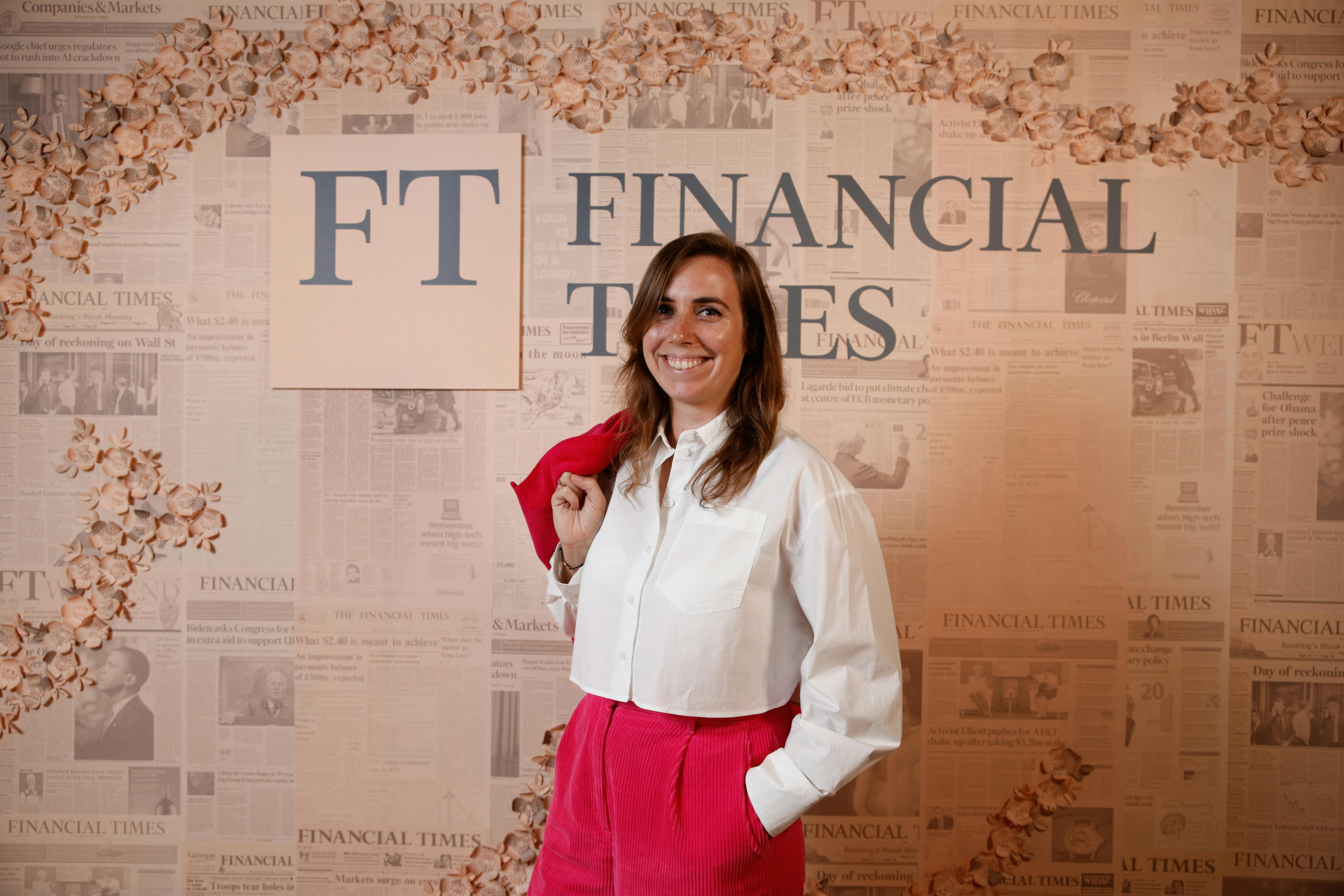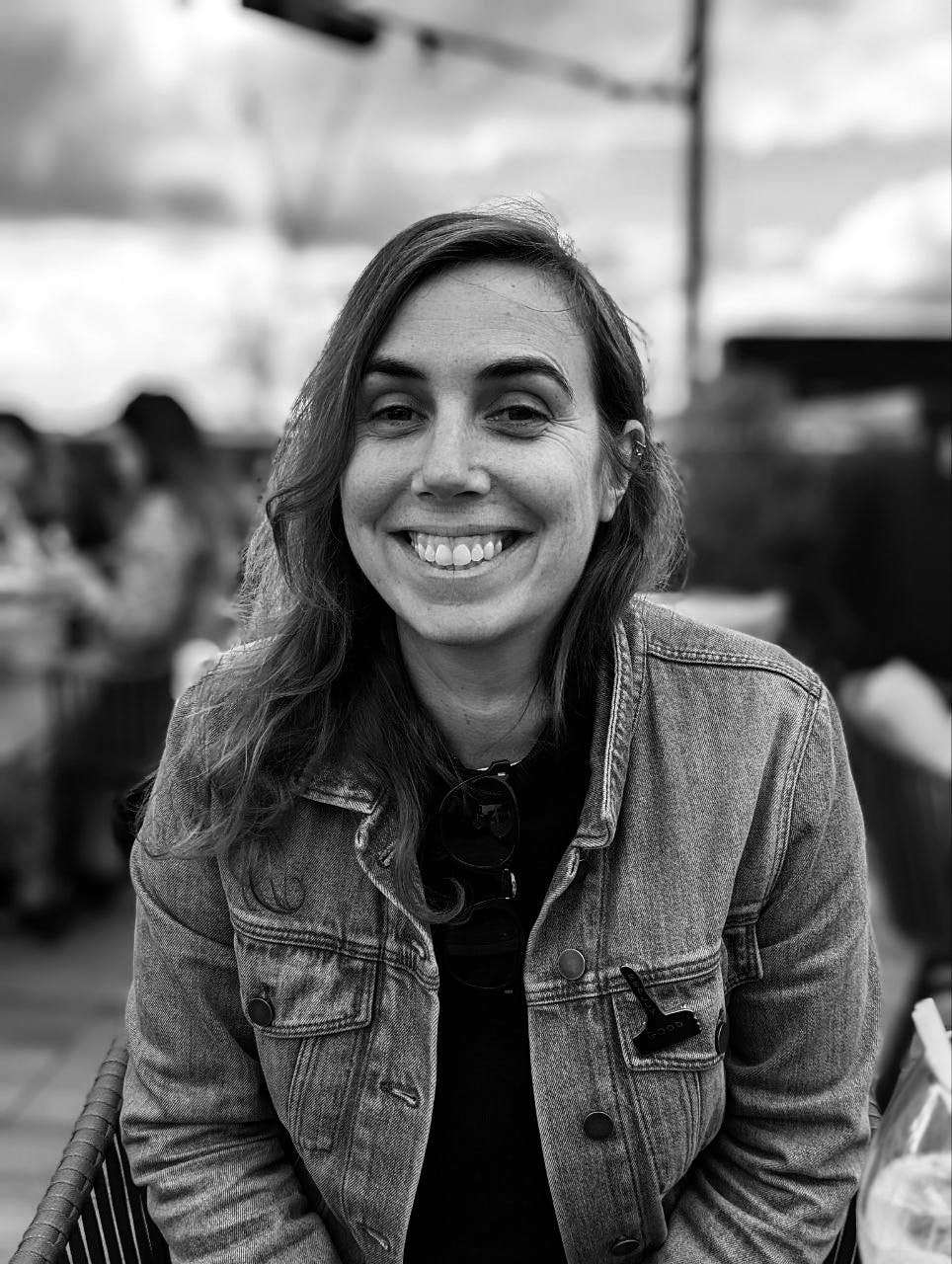
In this edition of the Life at FT Blog we hear from Hannah Sarney, Editorial Product Director at the Financial Times, who shares her journey as a lesbian advocate in the workplace. Gain insights into her role at the FT, personal achievements, and strategies for empowerment, both within the FT and beyond. Learn about her experiences of acceptance, her advocacy efforts outside the office, and the role models who inspire her.
Could you please introduce yourself and provide an overview of your role within the FT?
Kia ora, hello. Certainly, my name is Hannah Sarney, my pronouns are she/her and I’m a New Zealander who has spent the last eight years living in London. I joined the Financial Times (FT) six years ago as a senior audience engagement editor in the newsroom. I went on to lead the audience engagement team for four years and, recently, I stepped into the newly created role of editorial product director. In that role, I’m responsible for coordinating and communicating editorial strategy for customer-facing products. I spend most of my time connecting people and ideas across departments, always with the aim to grow the reach and impact of our journalism. I also created and run the FT’s Next Generation Board, a talent development programme that pairs a diverse group of emerging leaders with the FT’s senior management board each year.
Can you reflect on your personal journey as a lesbian in the workplace, discussing the challenges you have encountered and the strategies you employed to overcome them? How have these experiences shaped your commitment to promoting lesbian visibility?
Fortunately, the challenges I’ve faced over the years in the workplace have been largely self-imposed ones. I didn’t come out until my mid-twenties and continued to keep it largely under wraps at work due to concerns that I’d be seen differently. I didn't want to be a topic of conversation and, at the time, someone ‘coming out’ was a hot topic. However, each time I changed newsrooms, I’d challenge myself to be a bit braver and see what happened when I let my guard down with a new set of people. I can clearly track the trajectory of my career improving the more I allowed my lesbian identity to be visible in the workplace. It takes so much effort to deny or hide a part of yourself. Take that away and it’s amazing to see what else you can spend your mental and emotional energy on. It’s also just really nice to talk about my girlfriend at work – she’s brilliant.
Can you share with us some of the personal successes or achievements that you take pride in as an advocate for lesbian visibility. How have these accomplishments inspired you or motivated you to continue your efforts?
At the FT, we’ve now published a number of articles about ‘coming out at work’ over the years. The articles have given both FT staff and business leaders the opportunity to share their experiences. It’s always heartwarming to see the response from our readers.
I’m really motivated by helping more people feel free to be themselves. It’s a source of pride that the articles have resulted in people telling me they felt inspired and supported by the stories. Some of those people were spurred on to be a little or a lot more visible at work too. It’s a wonderful feeling to know you’ve had that impact.
How do you leverage your own experiences and identity as a lesbian to support and empower others within the FT? Are there any specific initiatives or strategies you have implemented?
It’s always easier (and more fun) to tackle problems together, especially when you’re in an LGBT+ employee group. I take pride in being one of the editorial representatives and acting as a bridge into the protected newsroom space to discuss issues and develop projects. We’ve been able to reach positive solutions on thorny issues over the years. Most recently, that’s translated into a comprehensive LGBT+ addition to the FT Style Guide. Language matters, so we worked with the group who set the standard.
As I mentioned, I created the Next Generation Board (NGB) at the FT. It’s a talent development programme that pairs a group of ten emerging leaders with the FT’s senior management board each year. I started the project as I wanted to give more people access to the company-wide insights I was afforded in my day job – and to showcase the success that comes with diversity of thought. I also started it because I was in a mentoring program about getting more women on boards, but I couldn’t see myself on a board one day. I was just a Kiwi kid, a lesbian, who tends to take on roles that have only recently been created. My mentor encouraged me to rewrite the script. We’re now into our fourth cohort and we’ve got a legacy of major projects influenced, driven and delivered by the NGB. Those include paid leave improvements, employee listening sessions, the development of the FT’s environmental sustainability strategy and more.
Can you provide an example where you felt a strong sense of visibility and acceptance as a lesbian within the FT? How did this experience impact your sense of belonging and overall well-being?
I marched and danced through central London waving a massive Financial Times flag while wearing a shirt that splashed the word “DYKE” across my chest in bright colours. I think that made me rather visible! It was a joyous experience with my friends from newsrooms past and present. I was grinning from ear to ear.
In what ways do you promote and advocate for lesbian visibility outside of the workplace? Are there any community organisations or initiatives that you actively participate in?
I’m working on finding time to do more advocacy work outside of the office again. At the moment though, it’s simply holding my girlfriend’s hand as we walk down the street. It sounds simple enough. But ten years ago I wouldn’t have dared to be that visible.
Are there any personal or professional role models who have significantly inspired your journey as an advocate for lesbian visibility? How have these individuals or their work impacted your own approach and activism?
Yes, absolutely. I’m in awe of the FT Proud committee leads. We’ve had some super stars over the years who put their whole heart into the work. Thanks to them, I’ve felt supported to tackle much bigger issues than I would have done alone.
In years gone by, when the LGBT+ employee groups were first starting, I was personally motivated to get involved due to the lack of lesbians participating. We weren’t being well represented and I felt it. So I thought… it may as well be me! I clearly remember the moment I realised we were a giant cliché while sitting around a table at a social evening: 15x gay men, 15x beautiful cocktails, 1x lesbian (me), and 1x pint of beer (mine). I’m heartened to see that changing a lot now, for much more important reasons than drinks, including the welcomed inclusion of our trans siblings.
